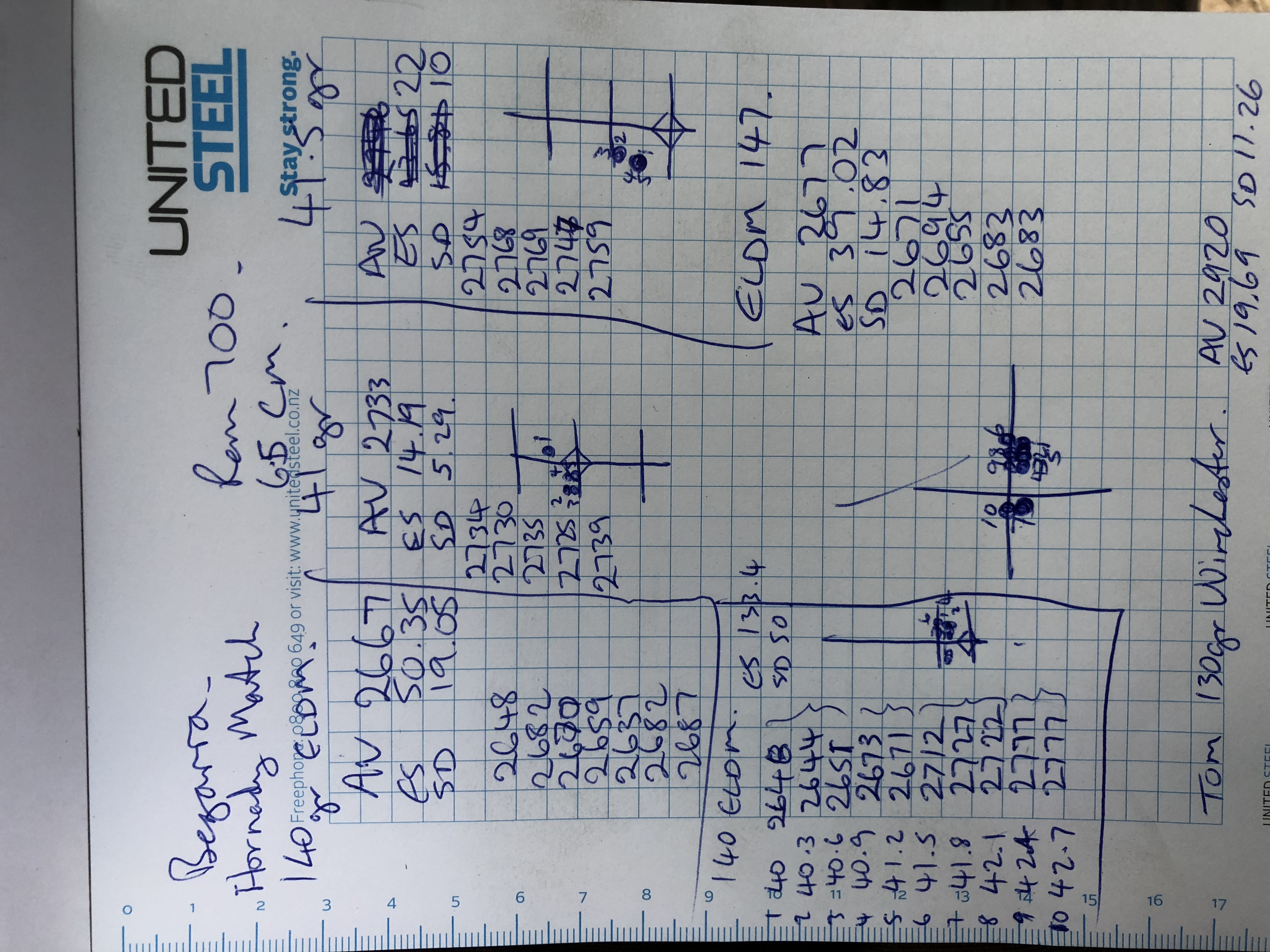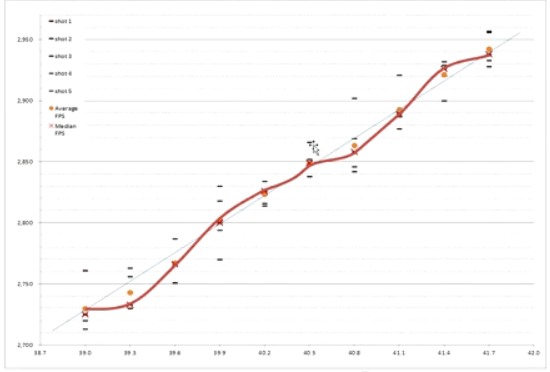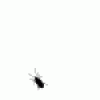I've just done a 15 shot test with increasing increments of powder, looking for the fabled plateaus where SD is fairly low cross a couple powder weights. Question is, why does the plateau occur?
Welcome guest, is this your first visit? Create Account now to join.
Welcome to the NZ Hunting and Shooting Forums.
Search Forums
User Tag List
+ Reply to Thread
Results 1 to 15 of 24
Thread: Why plateaus in velocity graph
-
14-10-2018, 07:07 PM #1Member

- Join Date
- Jun 2016
- Location
- Dunedin
- Posts
- 404
Why plateaus in velocity graph
-
-
14-10-2018, 09:35 PM #2
I BELIEVE its where the powder cant push projectile any faster ,either its run out of push or run out of barrel to push it in (flame thrower if go any higher)....
-
15-10-2018, 06:11 AM #3
To date I haven't found any that couldn't be explained by statistical variation.
-
15-10-2018, 07:02 AM #4Member

- Join Date
- Jun 2016
- Location
- Dunedin
- Posts
- 404
It might be a myth then Puffin?
-
15-10-2018, 09:28 AM #5
Its true with black powder you could work out the max load by firing over a white sheet. You kept increasing the powder when you noticed black specks on the sheet you had exceeded max load. More wouldnt give you any more velocity but it wasnt dangerous it just didnt have time to burn before the bullet left the barrel.
-
15-10-2018, 01:33 PM #6Member

- Join Date
- Aug 2017
- Location
- Timaru
- Posts
- 733

The column on the lower left, is that the kind of thing you are looking for.
-
15-10-2018, 04:36 PM #7Member

- Join Date
- Jun 2016
- Location
- Dunedin
- Posts
- 404
Yes, Cowboy that's what I mean. The theory that at certain ranges of powder charge velocity changes very little. Like this graph from the 6.5 Guys. They say we should focus on loads where the line is flattest since there, the SD is lowest. I don't know enough to dispute it but I can't get the idea to reconcile with anything I know about physics. Thought I'd ask if anyone else knew what was going on.

-
15-10-2018, 05:20 PM #8Member

- Join Date
- Jun 2013
- Location
- Middle Earth
- Posts
- 4,540
What is the correlation between the plateau of the velocity and the stabilisation of the barrel harmonics?
Can you have regular speed and shitty groups? And very good groups but very irregular speed?
-
15-10-2018, 05:23 PM #9
Does "SD" refer to sectional density? Is that not just basically a formula for bullet weight over bullet frontal area, unrelated to velocity?
An itch ... is ... a desire to scratch
-
15-10-2018, 06:31 PM #10Gone but not forgotten

- Join Date
- Apr 2017
- Location
- Hamilton
- Posts
- 4,129
I'm guessing SD means standard deviation.
Could the plateaus be where the extra powder (and it's energy) are going into your brass instead of more velocity? As in the extra energy is stretching/deforming/working the brass more?
-
15-10-2018, 08:15 PM #11
If you are shooting one shot at each powder weight, then repeat the exercise and see if it gives you the same or different results.
-
15-10-2018, 08:41 PM #12Member

- Join Date
- Aug 2017
- Location
- Timaru
- Posts
- 733
Iíve done it on heaps of rifles. Most of the time it works just fine. It gives you a pretty good idea of where to concentrate your 3 or 5 shot groups at the desired velocity depending on case pressure. You can also find your max pressure. Keep going till primers flatten and velocities usually peak then decrease 20 FPS. Adjust seating depth to increase accuracy. Not all nodes give good es. Or accuracy. Some people shoot 2 at each charge. You still get the same idea. Itís about speeding up simplifying and using less rounds for load development. Iíve found more often than not 1/2Ē or less single digit SD loads in 10-12 rounds. And tweak from there.
-
16-10-2018, 11:47 AM #13Member

- Join Date
- Jun 2016
- Location
- Dunedin
- Posts
- 404
Thank you Cowboy06
-
16-10-2018, 01:15 PM #14Member

- Join Date
- Mar 2014
- Location
- Tauranga
- Posts
- 3,023
Interesting observation. Never thought of why there would be flat spots in velocity, just that they are beneficial to identify and work with. I cant find any indication as to why on dr google.
-
16-10-2018, 07:34 PM #15
If you think about it logically there is no way to gain any reliable indication of a plateau by using one shot per charge weight. The usual ES of most loads will make it completely random. @stug is on to it, if you think you have found something repeat the test twice more.
Just a slopy retrobate
Similar Threads
-
6.5x55 velocity
By rusl in forum Reloading and BallisticsReplies: 32Last Post: 12-07-2017, 08:55 PM -
Calculating velocity
By rusl in forum Reloading and BallisticsReplies: 4Last Post: 31-01-2017, 11:46 PM -
300 win mag velocity?
By GWH in forum Reloading and BallisticsReplies: 3Last Post: 02-01-2017, 07:33 PM -
Retained velocity
By ebf in forum Reloading and BallisticsReplies: 16Last Post: 06-09-2016, 03:12 PM
Tags for this Thread
Welcome to NZ Hunting and Shooting Forums! We see you're new here, or arn't logged in. Create an account, and Login for full access including our FREE BUY and SELL section Register NOW!!





 21Likes
21Likes LinkBack URL
LinkBack URL About LinkBacks
About LinkBacks



 Reply With Quote
Reply With Quote


Bookmarks